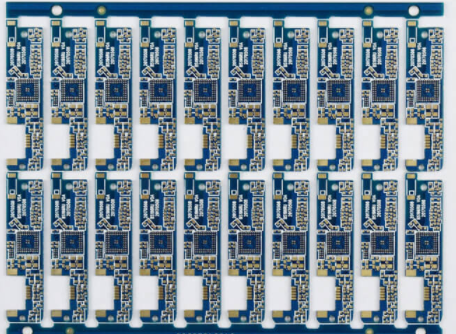The so-called copper pour is to use the unused space on the flexible circuit board as a reference surface and then fill it with solid copper. These copper areas are also called copper filling. The significance of copper coating is to reduce the impedance of the ground wire and improve the anti-interference ability; reduce the voltage drop and improve the efficiency of the power supply; connecting with the ground wire can also reduce the loop area. Also for the purpose of making the PCB as non-deformed as possible during soldering, most PCB manufacturers will also require PCB designers to fill the open area of the PCB with copper or grid-like ground wires. If the copper is not handled properly, it will Whether the gains or losses are rewarded or lost, is the copper coating "the advantages outweigh the disadvantages" or "the disadvantages outweigh the advantages"?
Everyone knows that under high frequency, the distributed capacitance of the wiring on the printed circuit board will play a role. When the length is greater than 1/20 of the corresponding wavelength of the noise frequency, an antenna effect will occur, and the noise will be emitted through the wiring. If there is a poorly grounded copper pour in the PCB, the copper pour becomes a tool for spreading noise. Therefore, in a high-frequency circuit, do not think that the ground wire is connected to the ground. This is the "ground "Line", must be less than λ/20, punch through holes in the wiring, and "good ground" with the ground plane of the multilayer board. If the copper coating is handled properly, the copper coating not only increases the current, but also plays a dual role of shielding interference.

There are generally two basic methods for copper coating, namely large-area copper coating and grid copper. It is often asked whether large-area copper coating is better than grid copper coating. It is not good to generalize. why? Large-area copper coating has the dual functions of increasing current and shielding. However, if large-area copper coating is used for wave soldering, the board may lift up and even blisters. Therefore, for large-area copper coating, several grooves are generally used to alleviate the blistering of the copper foil. The pure mesh copper coating is mainly used for shielding, and the effect of increasing the current is reduced. From the perspective of heat dissipation, the mesh is beneficial (It lowers the heating surface of the copper) and plays a role of electromagnetic shielding to a certain extent.
The copper-clad board of the power supply type like the following cannot use the network
It should be pointed out that the grid is made up of traces in staggered directions. We know that for PCB circuits, the width of PCB traces has a corresponding "electrical length" (actual size) for the operating frequency of the circuit board. Divide by the digital frequency corresponding to the working frequency, see related books for details. When the working frequency is not very high, perhaps the role of the grid lines is not very obvious. Once the electrical length matches the working frequency, it will be very bad. You will find that the circuit does not work properly at all, and signals that interfere with the operation of the system are being emitted everywhere. So for colleagues who use grids, my suggestion is to choose according to the working conditions of the designed circuit board, and don't cling to one thing. Therefore, high-frequency circuits have high requirements for multi-purpose grids for anti-interference, and low-frequency circuits have circuits with large currents, such as commonly used complete copper.